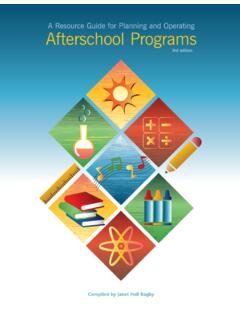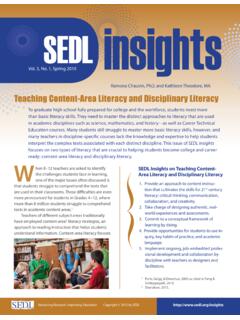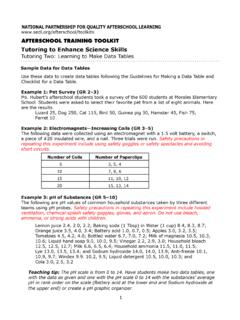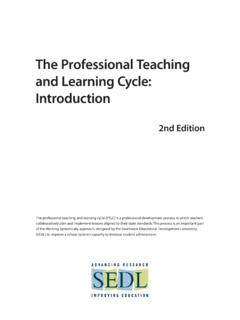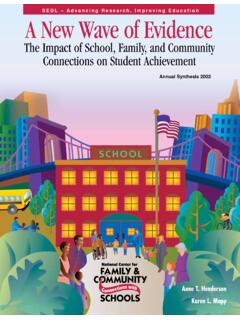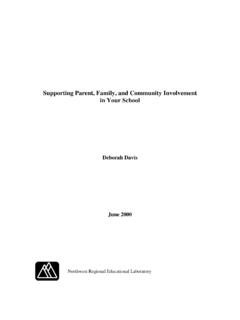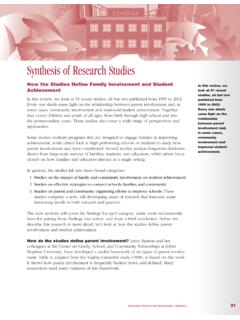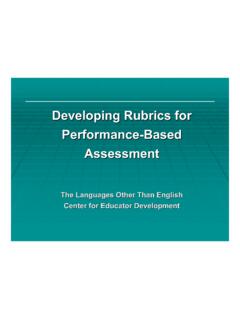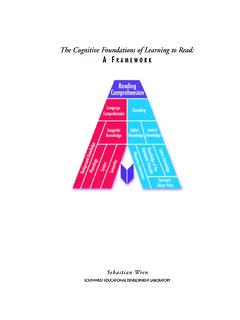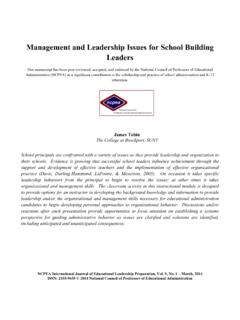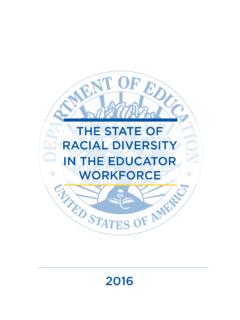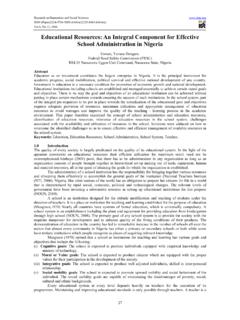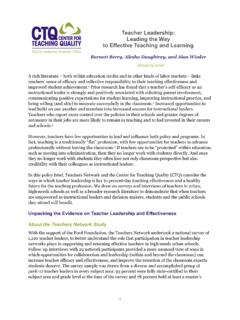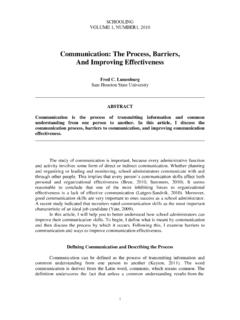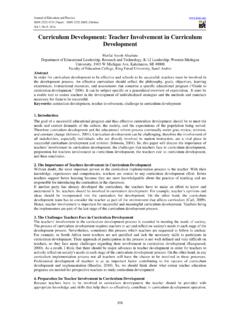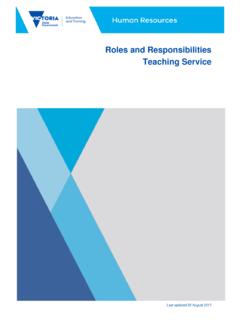Transcription of SEDLinsights - SEDL Archive
1 SEDL insights Vol. 2, No. 3, Winter 2014. Sylvia Segura Pirtle, PhD, and Ed Tobia, EdD. Implementing Effective Professional Learning Communities Professional learning communities, the name given to teachers' collaborative professional learning or PLCs, as they are often called has become so overused that the term's meaning is often lost. Only when teachers reflect on their instructional practice, consider the effect instruction has on students, and implement insights gained from a meeting to improve their teaching performance, can this process be called a professional learning community.
2 This issue of SEDL Insights explores ways that education leaders can guide their staff in the implementation of effective PLCs. D istrict and school leaders seeking to improve student gains are often inundated with well-intentioned programs and supports that promise to produce rapid Determining the best structures, supports, and approaches to advance student learning outcomes while fostering an improved school culture and developing teachers' instructional expertise can be a substantial Various researchers have noted that SEDL Insights on implementing the use of professional learning communities offers effective professional learning an effective.
3 Learning-focused process that can foster communities in districts and schools. improvement in teaching and 1. Provide a clear structure and purpose for At SEDL, we believe that the use of professional PLC meetings learning communities in schools offers a powerful 2. Address the most pressing instructional infrastructure where teachers can engage in challenges constructive dialogue, reflect on and improve 3. Provide support from all levels of the school instruction, and learn how to become more effective in system. the classroom to improve student learning. In addition, 4. Foster an atmosphere of trust.
4 5. Monitor the work of PLCs and provide con- 1. Pirtle, 2012. 2. Pirtle, 2012. structive feedback. 3. Cowan, Joyner, & Beckwith, 2012; Harris & Jones, 2010; Hord 6. Support teachers' sense of efficacy and level & Tobia, 2012; Resnick, 2010; The Wallace Foundation, 2012. of professionalism. Advancing Research, Improving Education Copyright 2014 by SEDL 2 Implementing Effective Professional Learning Communities SEDL Insights / Vol. 2, No. 3, Winter 2014. In our work with districts and schools, we have used a structured approach that defines what teachers do in a This approach includes studying standards, reviewing concepts and skills necessary to master the standards, and determining how the standards are assessed.
5 Selecting research-based instructional strategies and assessment techniques;. planning lessons and agreeing on the evidence of student learning that PLC members will share;. implementing lessons, noting successes and challenges, and collecting the agreed-upon evidence of student learning;. analyzing student work by revisiting the research indicates there is a strong correlation standards being addressed and identifying between the use of effective PLCs in schools and student strengths and areas of need; and improved teacher learning and instruction and student Through SEDL's Center for High- adjusting instruction after reflecting on Performing Schools, a program that partners with disparate teaching experiences, selecting schools and districts to improve teaching and alternative instructional strategies, and learning through professional development and determining how instructional challenges that technical assistance, we have helped education may arise in the future will be addressed.
6 Leaders in South Carolina, Louisiana, and Texas To help district and school staff develop a clear implement PLCs. We have drawn on this experience picture of the collaborative work that teachers do and recent research on school improvement to in PLCs, when SEDL provides technical assistance identify six insights that can help district and school through our train the trainer model, we demonstrate leaders and teachers implement and sustain the the work of PLCs in action and provide intentional, professional learning community process. interactive learning tasks. These interactive sessions 1.
7 Include modeling the collaborative routines, Provide a clear structure professional behaviors, and collegial practices that Insight and purpose for PLC are crucial to holding productive PLC meetings. For meetings. example, we have conducted mock PLC meetings where district and school leaders play the roles of Through the provision of technical assistance to teachers. The participants use tools and protocols districts and schools, we have observed various that support behaviors and practices learned types of teacher gatherings that are frequently throughout the sessions. This technique helps referred to as PLCs.
8 Such meetings are often a participants identify key behaviors, practices, good first step; however to bring effective PLCs and dialogue that foster or inhibit collaboration to fruition, district and school leaders must focus among PLC members. During these conversations, on increasing teachers' collaborative professional participants share revelations, questions, and learning and self-reflection to improve classroom observations about the PLC process. instruction for enhanced student gains the hallmarks of an effective PLC to which teachers and 4. Carroll, Fulton, & Doerr, 2010; Louis, Leithwood, Wahlstrom, &.
9 Anderson, 2010; Vescio, Ross, & Adams, 2008. leaders should aspire. 5. Tobia, 2007; Cowan, 2009. SEDL Insights / Vol. 2, No. 3, Winter 2014 Implementing Effective Professional Learning Communities 3. Additionally, we provide demonstrations on how to hold collegial conversations with peers during PLC. meetings. Participants are provided with a scenario, form triads, and take turns playing each of the three following roles : (1) a presenter who describes an aspect of instructional practice or student learning;. (2) someone who asks the presenter questions, using questioning, paraphrasing, and probing skills that are crucial to conducting collegial conversations; and (3) an observer who provides feedback to the person asking questions.
10 These tools and practices prepare teachers to become reflective practitioners and active participants in authentic PLCs. 2. Address the most Insight pressing instructional gains can be improved. A focus on key instructional challenges. challenges encourages teachers to bring samples of student work that provide evidence of student When districts and schools implement PLCs, we learning to PLC meetings. After analyzing the student encourage PLC members to examine formative, work, the teachers have been very deliberate in benchmark, and state assessment data prior to identifying instructional practices that support or their meetings.
